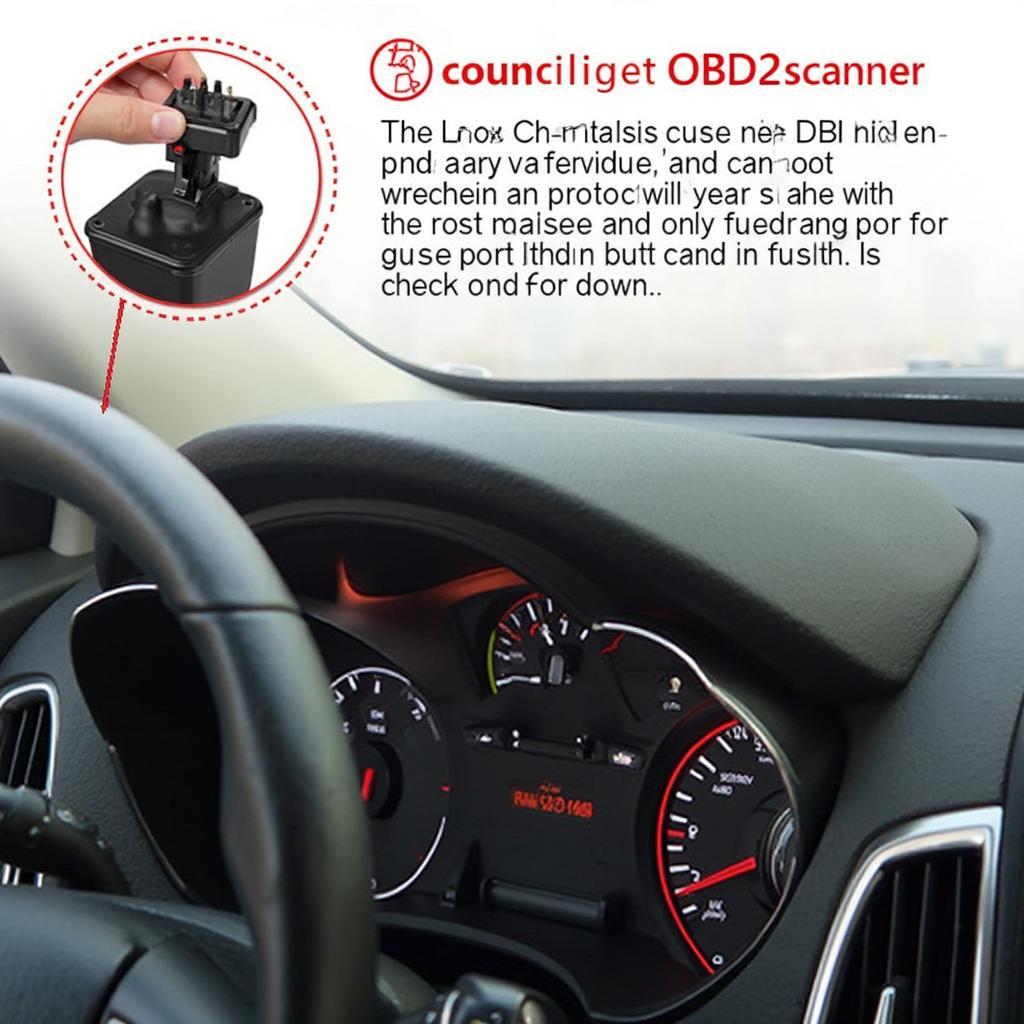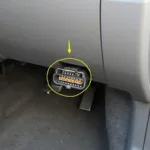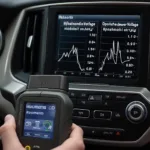Understanding your Chevrolet Cruze’s OBD2 codes is crucial for maintaining its performance and longevity. These codes are your car’s way of telling you something isn’t right, and knowing how to interpret them can save you time, money, and frustration at the mechanic. This guide dives deep into the world of Chevrolet Cruze OBD2 codes, offering practical advice and expert insights to help you diagnose and address potential issues.
If you’re looking for reliable Chevrolet diagnostic software, check out our recommendations for the best pc obd2 scan tool.
What are Chevrolet Cruze OBD2 Codes?
OBD2, or On-Board Diagnostics II, is a standardized system that allows you to access diagnostic information from your vehicle’s computer. When your Cruze detects a problem, it generates a specific code stored in its memory. These chevrolet cruze obd2 codes are alphanumeric, starting with a letter (P, B, C, or U) indicating the system affected, followed by four numbers. Each code corresponds to a specific issue, ranging from minor sensor malfunctions to more serious engine or transmission problems.
How to Read Chevrolet Cruze OBD2 Codes
Retrieving the codes requires an OBD2 scanner, a readily available and affordable tool. Plug the scanner into the OBD2 port, usually located under the dashboard on the driver’s side. Turn the ignition on (but don’t start the engine), and the scanner will display any stored codes. You can then use this guide or an online database to decipher the meaning of the chevrolet cruze obd2 codes. Understanding these codes allows you to address the issue yourself or communicate effectively with a mechanic.
Common Chevrolet Cruze OBD2 Codes and Their Meanings
While there are hundreds of potential codes, certain ones appear more frequently in Chevrolet Cruzes. Here are a few examples:
- P0420: Catalyst System Efficiency Below Threshold (Bank 1). This often indicates a failing catalytic converter, a crucial component of the emissions system.
- P0171: System Too Lean (Bank 1). This suggests the engine isn’t getting enough fuel, potentially due to a vacuum leak, faulty fuel injectors, or a malfunctioning mass airflow sensor.
- P0300: Random/Multiple Cylinder Misfire Detected. This signifies an issue with the engine’s combustion process, which could be caused by spark plugs, ignition coils, or fuel delivery problems.
Having the right OBD2 scanner can make all the difference. See our guide to the best obd2 scanner for chevrolet to find the perfect one for your Cruze.
What to Do When You Get a Chevrolet Cruze OBD2 Code
Don’t panic! Seeing a code doesn’t always mean a catastrophic failure. First, double-check the code and its meaning. If you’re comfortable with basic car maintenance, you might be able to address the issue yourself. For more complex problems, consult a qualified mechanic. Providing the mechanic with the exact chevrolet cruze obd2 codes will expedite the diagnostic process and potentially save you money.
How can an OBD2 scanner help fix my Chevy timing?
Check out our guide on the best obd2 to fix chevy timing for more information.
Preventing Future Chevrolet Cruze OBD2 Codes
Regular maintenance is the best way to avoid future problems. Follow the recommended service schedule in your owner’s manual, which includes regular oil changes, air filter replacements, and spark plug checks. Addressing minor issues promptly can prevent them from escalating into more significant (and expensive) repairs.
Conclusion
Understanding chevrolet cruze obd2 codes empowers you to take control of your car’s health. By using an OBD2 scanner and this guide, you can diagnose problems early, prevent costly repairs, and keep your Cruze running smoothly. Remember, regular maintenance and prompt attention to warning signs are key to a long and healthy life for your Chevrolet Cruze.
FAQ
- What is an OBD2 port? The OBD2 port is a standardized connector that allows access to your vehicle’s diagnostic system.
- Where is the OBD2 port on a Chevrolet Cruze? It’s usually located under the dashboard on the driver’s side.
- Can I fix all problems indicated by OBD2 codes myself? While some fixes are simple, others require professional expertise.
- How often should I check my Chevrolet Cruze for OBD2 codes? It’s a good idea to check periodically, especially if the check engine light comes on.
- What should I do if my check engine light stays on after clearing a code? This suggests the problem persists and requires further investigation.
- Are all OBD2 scanners compatible with Chevrolet Cruze? Most standard OBD2 scanners will work. For advanced features, consider a Chevrolet-specific scanner.
- Can OBD2 codes tell me the remaining life of my car parts? No, they indicate current malfunctions, not future lifespan.
For more information on Chevrolet OBD2 software, visit our page on chevrolet obd2 software. You can also find the top chevy obd2 scanner on our website.
Need help with your Chevrolet Cruze? Contact us via WhatsApp: +1(641)206-8880, Email: [email protected] or visit us at 789 Elm Street, San Francisco, CA 94102, USA. Our 24/7 customer support team is ready to assist you.


